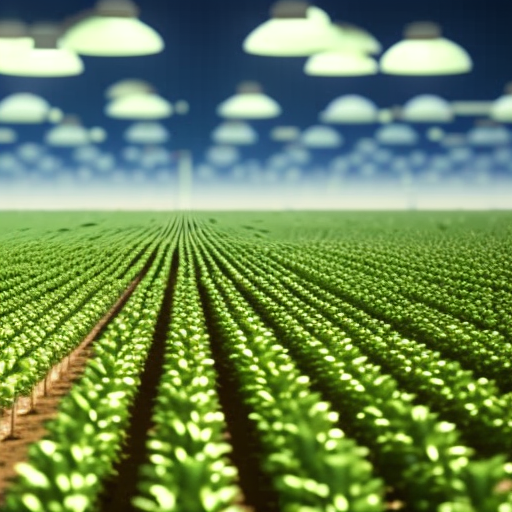
The Anaerobic Digestion Research and Education Center (ADREC) at Michigan State University (MSU)
The Anaerobic Digestion Research and Education Center (ADREC) at Michigan State University (MSU) was founded in 2008, and conducts research and more
Finding ways to create renewable energy with existing natural resources
Finding ways to create renewable energy with existing natural resources is a key way to have a sustainable energy source in the future. The Anaerobic Digestion Research and Education Center (ADREC) at Michigan State University (MSU) is working towards that goal, and many others to create a more climate-smart agriculture and industry. ADREC was founded in 2008, and provides research, professional development, and outreach support for waste-to-energy systems, including bench top, pilot-scale and commercial anaerobic digestion systems.
Anaerobic digesters for sustainable energy and waste reduction
Anaerobic digesters are a way to create sustainable energy while reducing waste. The process of anaerobic digestion is when organic materials are converted into methane and carbon dioxide via anaerobic microorganisms living in the absence of oxygen. MSU has a leading position in sustainable energy research and application with the full scale anaerobic digester fed by dairy manure and food waste and ADREC. MSU’s anaerobic digester is one of the few on campus in nation and works closely with ADREC for monitoring the operational and performance parameters. ADREC manager Sibel Uludag-Demirer, Ph.D., and her team also provide research and consulting opportunities and data analysis to farmers and industry looking to improve their waste and nutrient management of wastewater or waste products on the farm.
Research and optimization for anaerobic digestion
“In ADREC, we are not only carrying out standard biological tests of the samples, but also help the clients use and understand the results correctly.” said Uludag-Demirer. “We also carry out research that is focused on anaerobic digester performance optimization and operate pilot scale digesters for specific feedstocks at the optimum conditions. In ADREC, we develop unique tailored proposals based on the needs of clients, and provide consultation to evaluate the outcomes.”
Utilizing waste resources for renewable energy
The ADREC is providing services to farmers in Michigan and around the United States to help them utilize resources that were previously viewed as waste. Anaerobic digestion creates renewable resources, that will in turn, provide a revenue stream to offset the operational costs and provide revenue for the farm.
Collaboration and events for climate-smart farming practices
ADREC also hosts events and workshops throughout the year to showcase how farmers can incorporate more climate-smart farming practice. ADREC collaborates with partners, such as the MSU AgBioResearch, MSU Extension, Michigan Economic Development Corporation (MEDC), and the U.S. Department of Agriculture’s Agriculture Research Service. These events bring anaerobic digestion full circle, powering electric tractors and electric vehicles at the demonstrations.
“As the technology for utilizing natural gas to produce power improves, methane-rich-biogas that is produced from anaerobic digesters are viewed from a new perspective associated with EVs.” said Uludag-Demirer. “Recently, ADREC team helped Dr. Wei Liao (ADREC Director) organize a workshop to introduce one of a kind waste-to-energy system involving the conversion of biogas to electricity using biogas produced from anaerobic digester fed by dairy manure. It was a great event and opportunity to illustrate powering the farm operations and doing it sustainably.”
Did you find this article useful?
SDGs, Targets, and Indicators
-
SDGs addressed or connected to the issues highlighted in the article:
- SDG 7: Affordable and Clean Energy
- SDG 9: Industry, Innovation, and Infrastructure
- SDG 12: Responsible Consumption and Production
- SDG 13: Climate Action
- SDG 15: Life on Land
The article discusses the Anaerobic Digestion Research and Education Center (ADREC) at Michigan State University (MSU), which focuses on creating renewable energy through anaerobic digestion. This aligns with SDG 7, which aims to ensure access to affordable, reliable, sustainable, and modern energy for all. Additionally, the article mentions ADREC’s work in waste-to-energy systems, which relates to SDG 9, which promotes sustainable industrialization and innovation. The emphasis on utilizing resources previously viewed as waste connects to SDG 12, which encourages responsible consumption and production. The article also highlights ADREC’s contribution to climate-smart agriculture and industry, aligning with SDG 13’s goal of taking urgent action to combat climate change. Finally, the mention of ADREC’s collaboration with partners and events showcasing climate-smart farming practices relates to SDG 15, which focuses on protecting, restoring, and promoting sustainable use of terrestrial ecosystems.
-
Specific targets under those SDGs based on the article’s content:
- Target 7.2: Increase substantially the share of renewable energy in the global energy mix
- Target 9.4: Upgrade infrastructure and retrofit industries to make them sustainable
- Target 12.4: By 2020, achieve the environmentally sound management of chemicals and all wastes throughout their life cycle
- Target 13.2: Integrate climate change measures into national policies, strategies, and planning
- Target 15.5: Take urgent and significant action to reduce degradation of natural habitats, halt the loss of biodiversity, and protect and prevent the extinction of threatened species
The article’s focus on creating renewable energy through anaerobic digestion aligns with Target 7.2 of SDG 7, which aims to increase the share of renewable energy in the global energy mix. ADREC’s work in waste-to-energy systems and its emphasis on sustainable practices connect to Target 9.4 of SDG 9, which calls for upgrading infrastructure and industries to make them sustainable. The article’s mention of utilizing resources previously viewed as waste relates to Target 12.4 of SDG 12, which aims to achieve environmentally sound management of chemicals and wastes. ADREC’s contribution to climate-smart agriculture aligns with Target 13.2 of SDG 13, which focuses on integrating climate change measures into national policies and planning. Finally, the emphasis on protecting and promoting sustainable use of terrestrial ecosystems connects to Target 15.5 of SDG 15, which calls for urgent action to reduce habitat degradation and protect threatened species.
-
Indicators mentioned or implied in the article:
- Renewable energy share in the global energy mix
- Number of infrastructure upgrades and retrofits for sustainability
- Extent of environmentally sound management of chemicals and wastes
- Inclusion of climate change measures in national policies and planning
- Extent of reduction in habitat degradation and protection of threatened species
The article does not explicitly mention specific indicators. However, the indicators can be inferred based on the targets identified. The share of renewable energy in the global energy mix can be used as an indicator for Target 7.2 of SDG 7. The number of infrastructure upgrades and retrofits for sustainability can serve as an indicator for Target 9.4 of SDG 9. The extent of environmentally sound management of chemicals and wastes can be measured to track progress towards Target 12.4 of SDG 12. The inclusion of climate change measures in national policies and planning can be assessed as an indicator for Target 13.2 of SDG 13. Finally, the extent of reduction in habitat degradation and protection of threatened species can be used as an indicator for Target 15.5 of SDG 15.
SDGs, Targets, and Indicators Table
| SDGs | Targets | Indicators |
|---|---|---|
| SDG 7: Affordable and Clean Energy | Target 7.2: Increase substantially the share of renewable energy in the global energy mix | Renewable energy share in the global energy mix |
| SDG 9: Industry, Innovation, and Infrastructure | Target 9.4: Upgrade infrastructure and retrofit industries to make them sustainable | Number of infrastructure upgrades and retrofits for sustainability |
| SDG 12: Responsible Consumption and Production | Target 12.4: By 2020, achieve the environmentally sound management of chemicals and all wastes throughout their life cycle | Extent of environmentally sound management of chemicals and wastes |
| SDG 13: Climate Action | Target 13.2: Integrate climate change measures into national policies, strategies, and planning | Inclusion of climate change measures in national policies and planning |
| SDG 15: Life on Land | Target 15.5: Take urgent and significant action to reduce degradation of natural habitats, halt the loss of biodiversity, and protect and prevent the extinction of threatened species | Extent of reduction in habitat degradation and protection of threatened species |
Behold! This splendid article springs forth from the wellspring of knowledge, shaped by a wondrous proprietary AI technology that delved into a vast ocean of data, illuminating the path towards the Sustainable Development Goals. Remember that all rights are reserved by SDG Investors LLC, empowering us to champion progress together.
Source: canr.msu.edu

Join us, as fellow seekers of change, on a transformative journey at https://sdgtalks.ai/welcome, where you can become a member and actively contribute to shaping a brighter future.






